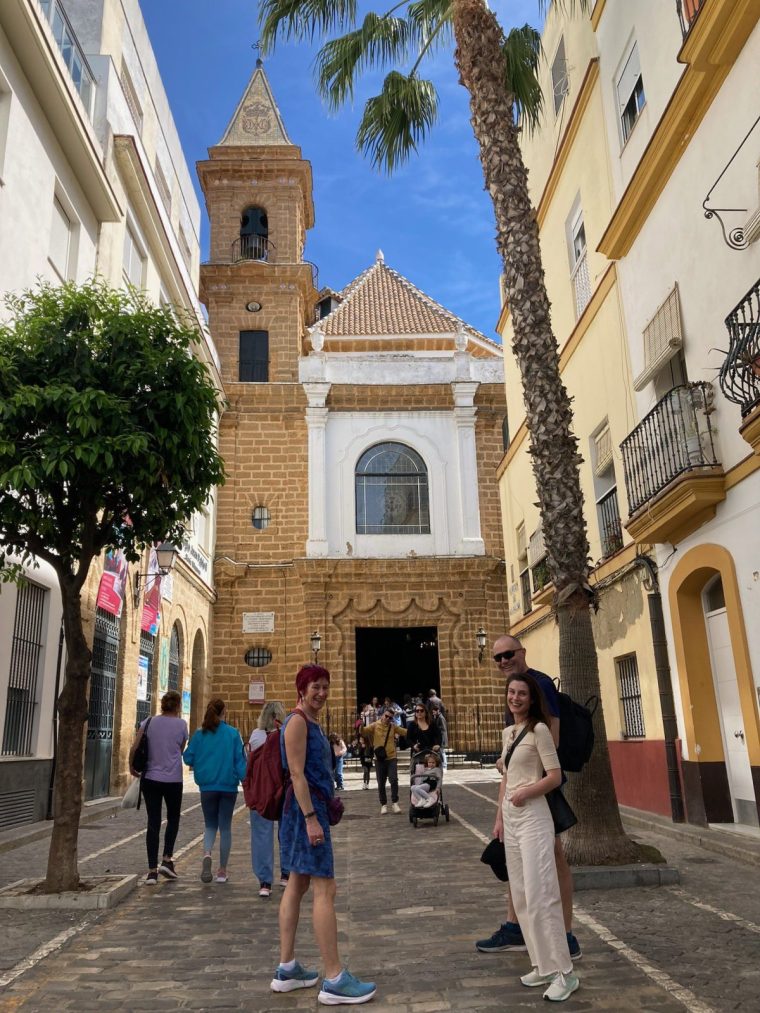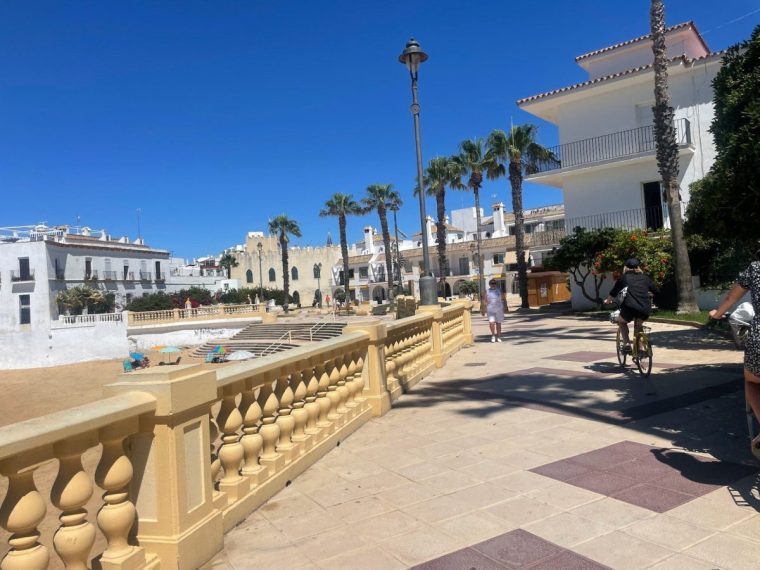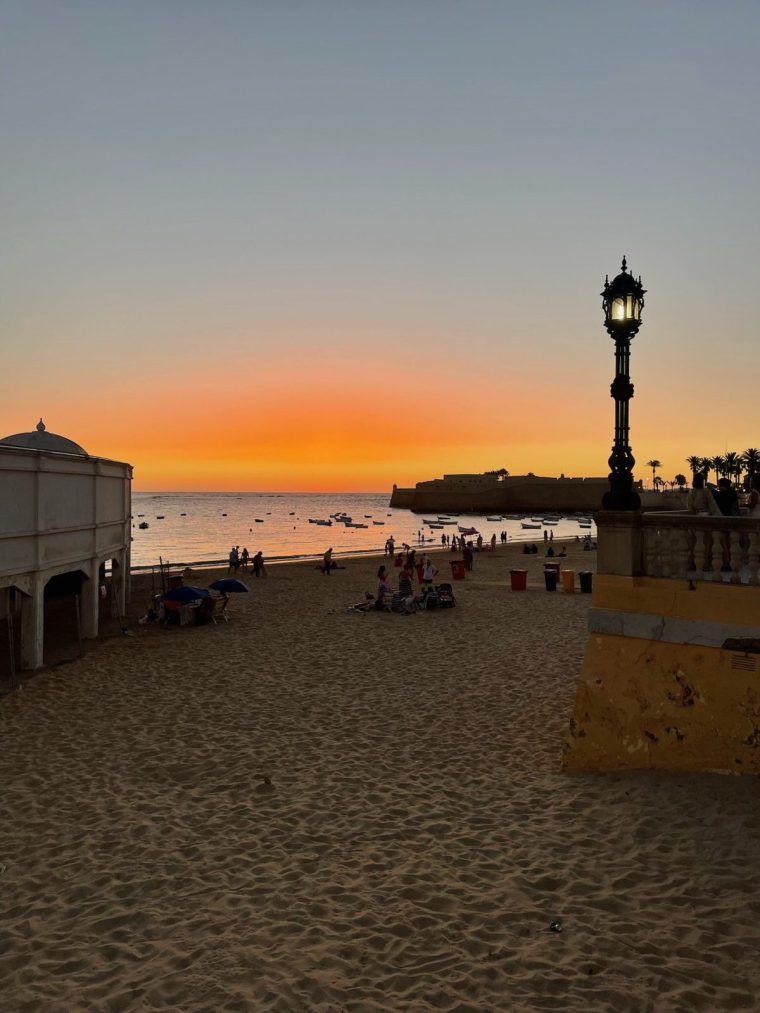A British expat who moved to the “Cotswolds of Spain” for a year to learn Spanish says she ended up staying for seven years after falling in love with the local culture and way of life.
Joanna Woods, 32, from Cheltenham in Gloucestershire, moved to Spain’s southern coastal province of Cádiz in 2018 to surf and learn the language.
“I always wanted to learn Spanish and speak Spanish fluently, and I also wanted to surf. So I decided to spend a year in Spain, teaching, surfing and learning Spanish,” she told The i Paper.
After moving, she initially worked as an English teacher, with her students including professors at local universities and tour guides at bodegas.

Ms Woods added that she “really loved it” in Spain so decided to stay a second year. “That was the year the pandemic happened, so I was a bit stuck.
“I was with my partner, who isn’t Spanish, but has also moved to Spain. It wasn’t a grand plan, but things have always fallen into place.”
Ms Woods has since stayed on in the Bay of Cádiz, settling in the town of Rota north of Cádiz city.
“Cádiz is a very interesting spot, because we are a very tiny city,” she said. “It feels like a village that accidentally became a city.”
She compared the idyllic and unspoilt Cádiz region of traditional Spanish towns to Britain’s Cotswolds area around Gloucestershire, Oxfordshire, Warwickshire and Wiltshire, where chocolate-box villages nestle in the landscape.

“The beauty of Cádiz is that because it’s not as easy to get to, but that means the type of tourists we have do put some thought into it. People often fly into Seville, then they have to get a bus and a train down. Sometimes you can take a taxi, but that’s going to be more expensive. Málaga is two and a half hours away.
“Part of the beauty of being here is because we are a little bit less accessible, it does by its nature stop massive amounts of tourism coming here.”
She added: “I often recommend people go to Málaga, hire a car and wiggle your way over to Cádiz, visiting all the little towns, because it’s kind of like Spain’s version of the Cotswolds here. So going and seeing all those Cotswolds villages, but the Spanish version of them, is a lot of fun.”
Ms Woods no longer works as a teacher, having set up a sustainable tourism business. After showing friends and family around Cádiz for years, she said she decided to “be a bit brave and do it professionally”.

Now with her business, Living La Vida Local Cádiz, she guides small groups around local restaurants and cultural sites.
“We focus on only going to local family-run spots, we try authentic food that only exists in Cádiz and local areas, nowhere else in Spain, and we normally drink some sherry, which can only come from the bay of Jerez in Cádiz.”
Ms Woods said she actively tried to ensure that her business avoided contributing to overtourism, which has caused misery for locals in Spain’s tourist hotspots where many can no longer afford to rent or buy homes thanks to soaring prices.
However, Ms Woods points out that Cádiz does not suffer from problems on the scale seen in some of Spain’s larger cities such as Barcelona or in the Balearic or Canary Islands.
“Whilst there are some protests, they aren’t against tourists themselves – you don’t get people spraying tourists with water pistols or anything like that. They are about Airbnbs and how they are causing issues in the local housing supply,” she said.
Ms Woods said that Cádiz was a popular destination for Spanish tourists and it was they, as opposed to local residents, who were more likely to oppose foreign tourists.
“In July and August we are inundated with Spanish tourism. A lot of people come from Madrid, Seville, these hot cities in the centre, and they come down to the coast for a month. They are the ones most likely to shout something at you, even though they’re not from the local area,” she said.
“Everywhere I’ve lived in Cádiz, I’ve got to know all of my neighbours and everyone is so welcoming, as long as you are trying to engage in the culture.
“I’m yet to find anyone who hasn’t gone out of their way to make sure I was OK. My impression of the locals for seven years has been that I always feel very welcomed by them because I always go about things in a very Spanish way.”
